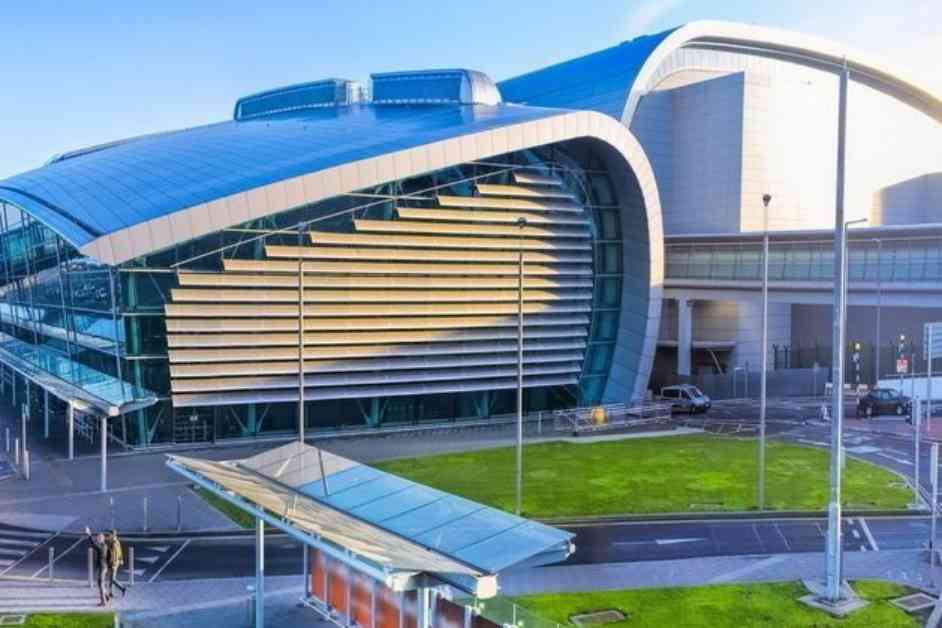Dublin Airport Surpasses 32 Million Passenger Cap, Achieves Record-Breaking Numbers in August
Dublin Airport, under the governance of the daa, has recently made headlines by surpassing its 32 million passenger cap for the year. The airport experienced a surge in passenger numbers in August, with a total of 3.46 million travelers passing through its doors, marking it as the busiest month in its 84-year history. This milestone showcases the increasing demand for air travel in Ireland and the airport’s pivotal role in connecting the country to the rest of the world.
August 12 saw a remarkable influx of 829,000 passengers, highlighting the peak season for travel. Furthermore, Sunday, August 18, emerged as the busiest day ever recorded at Dublin Airport, with a staggering 124,600 passengers transiting through the terminal. These figures reflect the airport’s significant contribution to the Irish economy and its pivotal position as a hub for both domestic and international travel.
Between May and August alone, over 10 million passengers traveled through Dublin Airport, bringing the total number for the year to 22.7 million. As of the end of August, passenger numbers at the terminals are trending 5.5% ahead of the previous year, indicating a steady growth in air travel. This upward trajectory is expected to continue into September, further solidifying Dublin Airport’s status as a key player in the aviation industry.
Despite the positive outlook, concerns have been raised regarding a potential decline in passenger numbers during the late autumn and winter months. This anticipation stems from the Irish Aviation Authority’s decision to reduce winter slots, limiting the number of seats available for airlines flying into Dublin Airport between November and March. Additionally, some airlines have opted to scale back their operations due to uncertainties surrounding the 32 million passenger cap imposed on the terminals.
In response to these challenges, the daa has taken proactive measures to mitigate the impact on passenger numbers. Efforts have been made to comply with planning regulations, including the removal of airline incentives at Dublin Airport. Moreover, a new scheme has been launched by Cork Airport to encourage airlines to redistribute seat capacity from Dublin to Cork, thereby alleviating the strain on Dublin’s infrastructure.
Cork Airport, Dublin’s regional counterpart, experienced a record-breaking month in August, welcoming 340,705 passengers—a 10% increase from the previous year. Recent statistics from the Central Statistics Office (CSO) indicate that Cork Airport is the fastest-growing among the three state airports, boasting an impressive growth rate of 11% in the first seven months of 2024. This upward trend underscores the significance of regional airports in supporting the country’s aviation sector.
CEO of daa, Kenny Jacobs, expressed optimism about the future of Dublin Airport while highlighting the challenges posed by the existing passenger cap and infrastructural constraints. Jacobs emphasized the need for a coordinated approach to address these issues and facilitate the airport’s growth to sustain Ireland’s connectivity with the global market. Despite the regulatory hurdles, daa remains committed to complying with planning conditions and seeking approval to raise the current passenger cap to 40 million annually.
The Infrastructure Application (IA) submitted by daa to Fingal County Council proposes sustainable investments to accommodate the projected increase in passenger traffic at Dublin Airport. While efforts to reduce airline demand have yielded some success, Jacobs anticipates that passenger numbers will exceed 32 million and potentially reach 33 million by the end of 2024. He stressed the importance of fostering a conducive environment for tourism, investment, and job creation, underscoring the pivotal role of Dublin Airport in driving economic prosperity.
In conclusion, the growth of Dublin Airport serves as a testament to Ireland’s resilience and ambition in the aviation sector. As the country strives to enhance its global connectivity and attract foreign investment, it is crucial to address the infrastructural challenges hindering the airport’s expansion. By fostering collaboration among stakeholders and adopting a forward-thinking approach, Ireland can position itself as a key player in the international aviation landscape, ensuring sustainable growth and prosperity for years to come.












